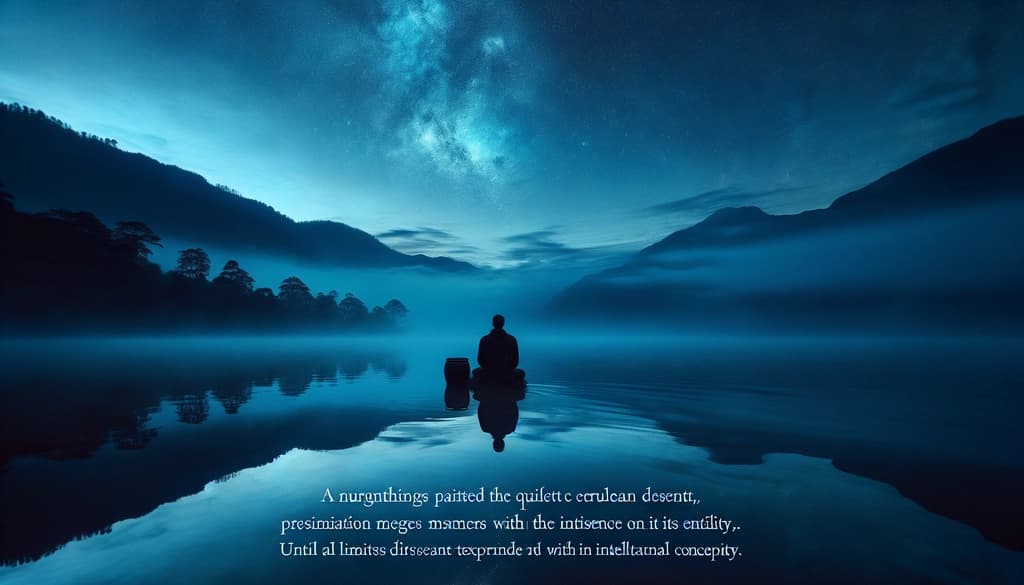What Is Unity Consciousness? Touching Wholeness Beyond Thought

The Mystery of Unity Consciousness
Unity consciousness is not a concept easily held by the mind, for it arises only as the mind grows quiet. Imagine a boundless ocean: each wave is distinct, yet inseparable from the water that contains it. So it is with our awareness. In everyday life, we move as individual waves—tide and foam named as “me” and “you.” But in moments of deep clarity, we may sense the truth of the ocean itself: beneath thought, beneath roles and stories, there is a seamless whole, unbroken and infinite. You may wish to deepen this understanding with an exploration of What is consciousness, a theme that quietly weaves throughout this stillness.
This unity is not about merging personal identities, but about awakening to a prior intimacy—what some traditions call “abiding as the Self,” and others name pure consciousness, undivided and ever-present. In this regard, teachings on Meditation topic: Non-duality explained can shed light on the subtle art of seeing beyond boundaries.
Awareness Beyond Thought: An Invitation
If you pause now and listen—not to the inner dialogue, but to the quiet alive underneath—can you sense an awareness that remains, even when thoughts subside? This is awareness beyond thought, a clear, gentle space in which all experience appears. Our levels of consciousness unfold like strata in the earth, each revealing a deeper form of presence. If you’re curious about these variations, consider exploring the Levels of consciousness that may reveal subtle shifts in perception.
You might try this: As you breathe, notice the arising and dissolving of thoughts, sensations, and emotions. Who or what is aware of them all? See if you can sense the silent background, the spacious presence in which your whole inner world unfolds. When identification with thoughts softens, there is often a felt sense of freedom, ease, and belonging. In the spirit of self-inquiry, the practice of turning toward the Observer self concept might offer further orientation.
How to Abide as the Self
Abiding as the Self is not striving to become something other—nor is it the annihilation of personality. Instead, it is a resting, a gentle relaxing into what always and already is. If it feels natural, you might:
- Rest your attention in the felt sense of being—simply, “I am.” - Notice the awareness that witnesses your thoughts, emotions, and body. - Whenever you are caught in striving or resistance, you might softly inquire: “Who is aware of this experience?” Not to answer, but to let your attention turn back, like a river returning to its source.
Within many Eastern philosophies, you may wish to glimpse the teaching within Advaita vedanta meaning, where unity and abiding as the Self are woven into a living tradition.
Over time, abiding becomes less a practice and more a natural flowering—a subtle shift from “trying to awaken” to “relaxing into what is awake already.”
Consciousness vs Ego: The Dance of Identity
In this exploration, it helps to distinguish consciousness from ego. Consciousness is the vast, open space in which everything arises—thoughts, roles, hopes, fears. Ego is simply a pattern of identification: the narrowing of attention into stories of “me and mine.” It’s not the enemy, nor something to slay, only a habitual contraction.
When we confuse ego with consciousness, we forget our wholeness and enter into separation: striving, guarding, judging. But whenever attention relaxes back into the ground of awareness, ego’s burdens lighten, and unity consciousness dawns—naturally, quietly, like mist lifting from a morning field. As you reflect on this, it can be nurturing to consider the truth within You are not your thoughts, a simple yet profound realization.
There’s also a subtle relationship between noticing itself and focused attention, and it’s worth exploring more about Awareness vs attention to bring gentle clarity to this dynamic.
Ordinary Life as Practice
This recognition is not for meditation cushions alone. In moments of beauty—a laugh shared, the first rain of spring, the hush before sleep—unity consciousness whispers. Even amid conflict, if you pause to sense the silent, spacious awareness holding all, the edge of division softens. You might experiment: the next time you feel strongly “me vs. them,” rest for a breath in pure noticing, letting labels fade, feeling life as it is, whole and undivided.
If Struggle or Doubt Arises
It is natural for the mind to resist or doubt these truths. The longing for unity may itself become a distraction, a subtle new chase. If you find yourself grasping or feeling left out, be gentle. Awareness is not elsewhere—it is the simple aliveness, the knowing of being, present now. Even confusion and separation arise within this ocean. Let them come and go, witnessed by the silent space of consciousness itself.
One morning, kneeling in her garden, Anna watched clouds drifting past the sun. Thoughts tangled like tangled roots—worries of yesterday, plans for tomorrow. Suddenly, beneath them all, she felt a stillness so wide and quiet, it seemed the whole world was breathing with her. In that moment, she realized she was not only Anna, but part of everything: the soil, the sky, the wind sighing through leaves.
The Lived Ripple of Awakening
Touching unity consciousness is rarely a permanent state, but even brief glimpses change us. Relationships may become less adversarial, daily tasks less burdensome, moments of beauty more vivid. Research in contemplative neuroscience hints that non-dual awareness can foster well-being, compassion, even subtle changes in the brain. Yet the deepest proof may always be the quiet revolution in the heart—the shift from defensiveness to openness, separateness to belonging.
The Doorway Remains Open
Unity consciousness is not some distant prize, but the subtle truth of what you are. May you, in your own rhythm, turn toward this simple beingness, resting in the wholeness that waits beneath every experience. When the longing to awaken arises, let your very longing become the path—each breath, a return.
